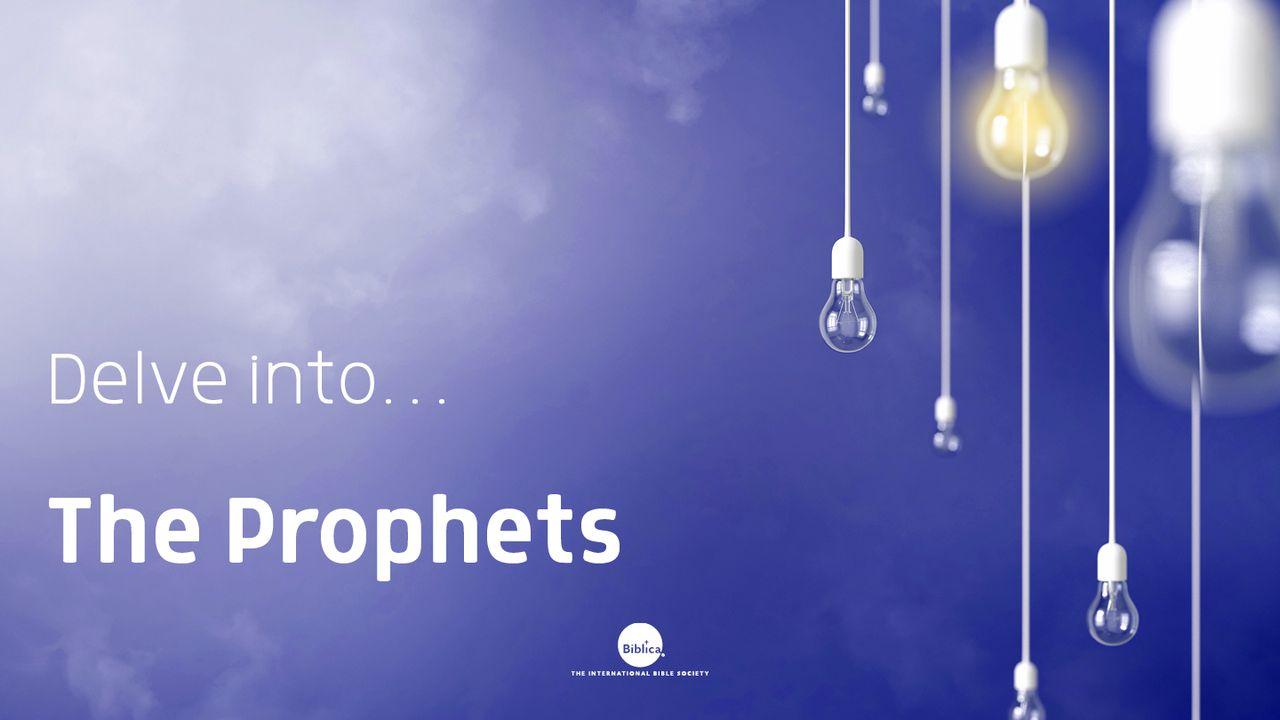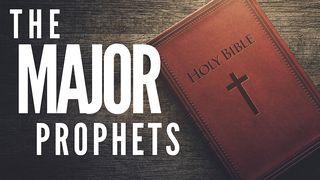Delve Into The ProphetsSample

DAY 9 – ISAIAH PART II
This lengthy book has eight main sections. The first section begins with oracles that are much like those of Amos, Hosea, and Micah. They condemn greed, extortion, and religious corruption. Divine judgment through foreign invasion is threatened repeatedly in these oracles, which were probably delivered at several different times. But there are also hopeful promises of restoration. In this section an extended oracle that pronounces seven woes and states five times that God’s wrath hasn’t yet been satisfied is broken up by an account of Isaiah’s calling and his counsel to Ahaz. The remaining oracles in this section have more to do with international politics than with Judah’s internal condition. They describe how Assyria, even though it has been an instrument of God’s judgment, will itself be judged for its arrogance and ruthlessness and how a righteous king will be established on Judah’s throne as a “banner for the peoples.”
The second major section of the book continues to take an international perspective. It’s a collection of oracles addressed to kingdoms and empires beyond Israel’s borders. Not all of these oracles refer to the situation in Isaiah’s own day, however. The first oracle, for example, announces that God will raise up the Medes to overthrow the Babylonian Empire. This event took place some 150 years after the end of Isaiah’s career, after the world situation had changed considerably from what it was in his day. A couple of other oracles in this section, and many more elsewhere in the book, also address the events of this later time period. But the remaining oracles in this section do refer to events within Isaiah’s lifetime, even though they come from different periods. As in the first section, there’s a prediction of Assyria’s inevitable downfall. The next oracles envision earlier events: they warn the Philistines and Moabites not to feel secure because they have survived one invasion, since another will follow. Next comes an even earlier oracle, predicting that Syria’s capital will fall but Judah will be delivered. The book then jumps forward some twenty years to an Ethiopian attempt to raise a coalition against Assyria. This pattern of moving back and forth in time continues throughout the section. Nevertheless, as a whole, it shows God’s divine rule over the kingdoms and nations of the world.
The third section of the book of Isaiah is a brief one in which the themes of the preceding oracles are applied on a worldwide scale. Individual nations are no longer the actors. Instead, God’s judgment becomes cosmic, and the earth itself is broken up—but only metaphorically, since afterward the people of Israel are regathered to their land and God reigns over them in Jerusalem. (The perspective of worldwide judgment expressed here is like that of the hymn stanzas that are found scattered through the book of Amos. It’s also represented in some other prophetic books.)
The fourth section consists of six long oracles. Each pronounces a “woe” on the people of Judah for seeking to form international alliances against Assyria, particularly under Egyptian leadership, instead of relying on God for protection. (Seven “woes” are actually pronounced in this section, since two are spoken at the beginning of the sixth oracle. Seven is the number of completeness in the Bible.) These oracles, which likely come from the years leading up to Sennacherib’s invasion, condemn the people for their greed, drunkenness, and complacency; for their misplaced confidence in their own abilities; and for their indifference to the prophet’s warnings. At the same time, they also include hopeful promises of ultimate restoration after judgment.
The fifth section, another brief one, contains two oracles. In them the perspective once again becomes worldwide, and God’s judgments are described in cosmic terms. The first oracle uses God’s judgment on Edom, a neighbor and longtime enemy of Judah, as an occasion to announce the general destruction of the wicked. The second oracle, by contrast, announces a universal renewal, culminating in the return of Judah’s exiles. Once again, a period after the prophet’s lifetime is being addressed.
The sixth section of the book contains narratives of two historical episodes. It first describes Sennacherib’s invasion, his field commander’s siege of Jerusalem, and Isaiah’s counsel to King Hezekiah during this crisis. A description of Hezekiah’s recovery from a near-fatal illness follows, even though this episode took place over ten years earlier. The episodes are presented out of sequence because an experience Hezekiah had just after his illness helps introduce the themes of the rest of the book, which relate to later historical events. Specifically, Marduk-baladan, a Babylonian king who had achieved independence from Assyria by the time of Hezekiah’s illness, sent messengers to congratulate him on his recovery. He probably also wanted to recruit Judah for an anti-Assyrian coalition. Hezekiah unwisely showed them all the treasures of his kingdom, demonstrating to the Babylonians that Judah wasn’t just a potential coalition partner, but also a target for plunder. Eventually all of these treasures were carried off to Babylon, as Isaiah predicted they would be.
PRAYER: Holy are You, Lord Almighty. The whole earth is full of Your glory.
Scripture
About this Plan

The Old Testament of the Bible is broken into three major sections, the second of which is known as the Prophets. If you didn’t know that, imagine all of the other interesting things you’ll learn in this reading plan as you explore the purpose, context, and background of this fascinating and unique part of God’s Word.
More
We would like to thank Biblica for providing this plan. For more information, please visit: http://www.biblica.com
Related Plans

The Major Prophets

Made for This

Words Have Power

Unleashed by Kingdom Power

Biblical Character Study: Disciples of Lord Jesus Christ

Made for More

A Radical Call to Holiness to Welcome His Glory - Jean-Luc Trachsel

Becoming a Person of Welcome

EquipHer Vol. 31: "Born to Thrive, Not Just Survive!"
